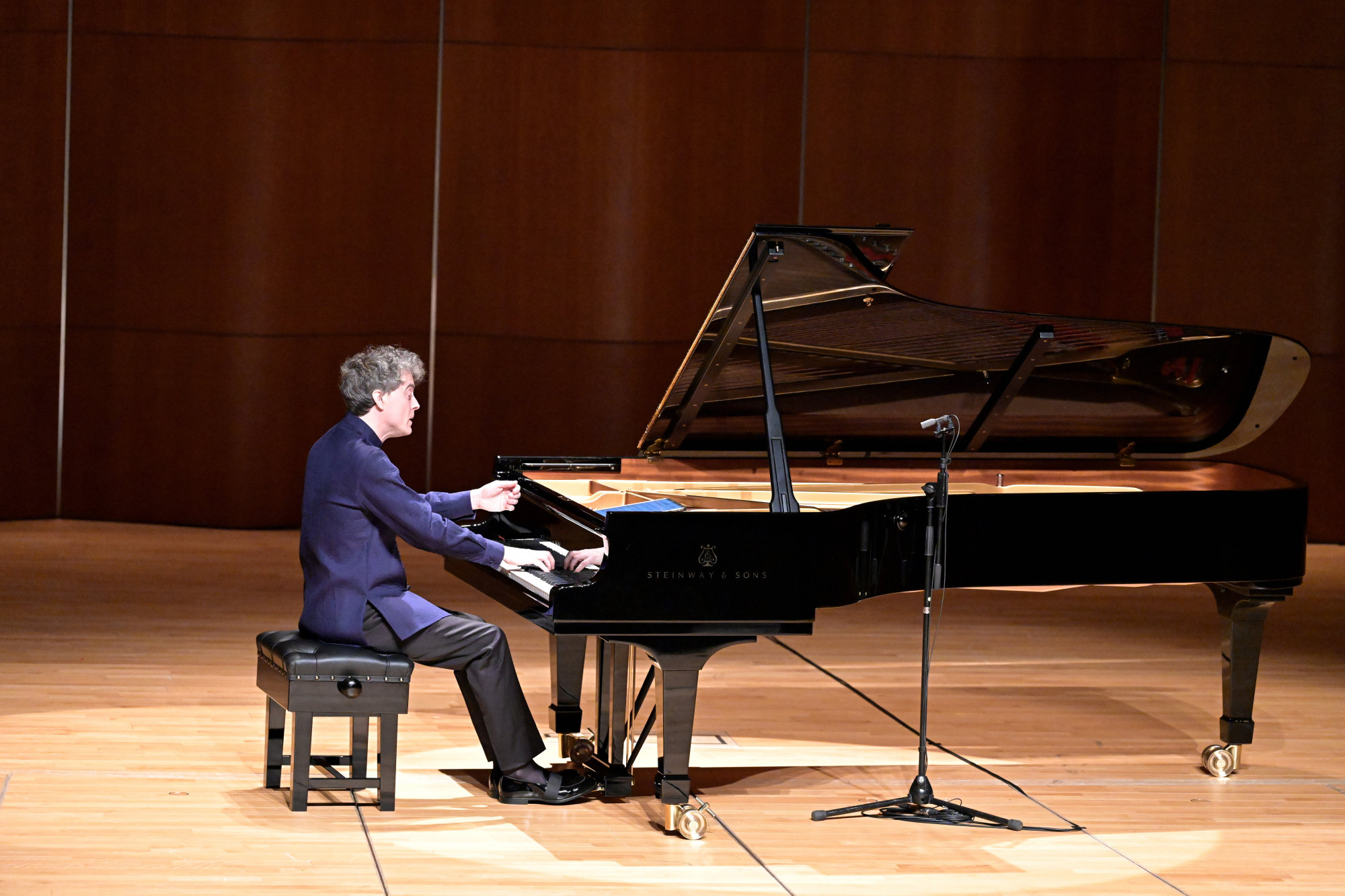
Review | In Schubert recital series in Hong Kong, pianist Paul Lewis brings out the complex layering of composer’s musical ideas
- In the concluding concerts of his four-recital series featuring the piano sonatas of Schubert, Paul Lewis knew which musical voices to bring to the fore
- His playing tasteful and by turns twinkling, lyrical, rousing and haunting, he brought out the character of six contrasting sonatas, including the final four
Just as top chefs layer flavours to make their dishes shine, pianists who take on Franz Schubert’s sonatas need to bring out the complex layering of his musical ideas.
Paul Lewis knows exactly how to do that and which voices to bring to the fore.
Performing at the University of Hong Kong on January 27 and 28, the former student of Alfred Brendel wrapped up the four-part “Schubert’s 12 Piano Sonatas with Paul Lewis” concert series with memorable renditions of six sonatas, including the emotionally charged final trilogy.
The Liverpool-born pianist began Saturday’s concert, the third of four, with Schubert’s early Piano Sonata No. 4 in A minor, answering a vigorous opening statement with cascading arpeggios.

His deft left-hand articulation lent the Allegretto rondo elements quirky charm, and the opening of the Allegro vivace finale brilliantly combined drama and fine lyricism, which sparkled in the dexterous interplay of voices.
With taste and panache, Lewis extracted an array of tonal colours from the opening Allegro of the Piano Sonata No. 9 in B major, Schubert’s first four-movement sonata.
His hymn-like reading of the Andante’s opening was ethereal, and he struck optimal balance in contrasting outbursts of staccato drama with the lyrical passages.
The Scherzo had a fabulous lilt, embellished with sparkling parallel octaves and a trio that was delicate and playfully chromatic.
The optimistic Allegro giusto finale also delighted throughout the registers, swinging well and proving a celebration of the accented triple time in Lewis’ hands.
‘Eye-opening’: art gives cellist a light-bulb moment about Schumann work
After the break came the Piano Sonata No. 18 in G major, nicknamed “Fantasie” by publisher Tobias Haslinger and described later by Schumann as “the most perfect in form and conception” of the Schubert sonatas.
Thoughtfully weighted opening chords, now a Lewis signature, swayed nostalgically in the opening the Molto moderato first movement..
Figures in the higher registers twinkled and resonated, and when desperation began to set in in the double-dotted interruptions, listeners found themselves plunged into Schubert’s darker tonal world.
Sentiments of longing and nostalgia were wonderfully captured by Lewis in the Andante movement’s opening, and although the darker fortissimo outbursts later on were forceful and tumultuous, they were never harsh in sound.
Lewis’ solid rhythm impressed in the Menuetto, as did the jaunty aspects of the Allegretto finale, which were vivid, playfully syncopated, and crisply accented, before fading and easing into a state of satisfying calmness.

Sunday’s billing of Schubert’s weighty final three sonatas meant a leisurely musical stroll was off the table. Although there was much to digest, it was well worth skipping afternoon tea for the matinee.
Torment and despair play a major role in these works given Schubert’s losing battle with syphilis in the final (yet prolific) year of his life, and in the Piano Sonata No. 19 in C minor, the only one of the three in a minor key, Lewis did not hold back when it came to delivering depth of musical expression.
His Allegro opening was concise and tumultuous, the Adagio full of transcendental mystery and the Menuetto suitably sombre and gentle, a prelude to Lewis’ barrage of agile crossings of hands, leaps across registers, sweeping arpeggios, and near-violent sforzandos in the Allegro finale.

The Allegro opening of the Piano Sonata No. 20 in A major was rousing, and developed into a movement of profound otherworldliness, where Lewis yet again employed superb layering in the four-part harmony of the lyrical second theme.
The heart-wrenching Andantino was almost unbearable in its beauty. Lewis extracted wonderful musical sighs before unleashing unbridled fantasy in the improvisatory middle section.
Appearing almost as light relief, the Scherzo’s opening – cleverly prefigured by the rolled chords at the end of the Andantino – saw Lewis playing with impressive dexterity and articulation.
Legato warmth marked the fluid triplet motion in the rondo finale, with fiery agitation in its Presto section and a power-packed statement of the sonata’s opening fanfare to finish.

For that Desert Island Discs pick, who could overlook Lewis’ performance of Schubert’s final Piano Sonata No. 21 in B-flat?
The opening chords of the Molto moderato movement were like soft sound cushions that when gently pressed, delicately returned to form.
Lewis’ sombre and haunting playing of the C-sharp minor Andante sostenuto was full of yearning, and supported by the pianist’s fine use of the pedal.
The triumph radiated by the final Presto was both a fitting conclusion to Lewis’ monumental performance and a reassuring moment of resolution in Schubert’s darkest period.
“Schubert’s 12 Piano Sonatas with Paul Lewis” (parts 3 and 4), Grand Hall, Lee Shau Kee Lecture Centre, The University of Hong Kong. Reviewed: January 27-28.

